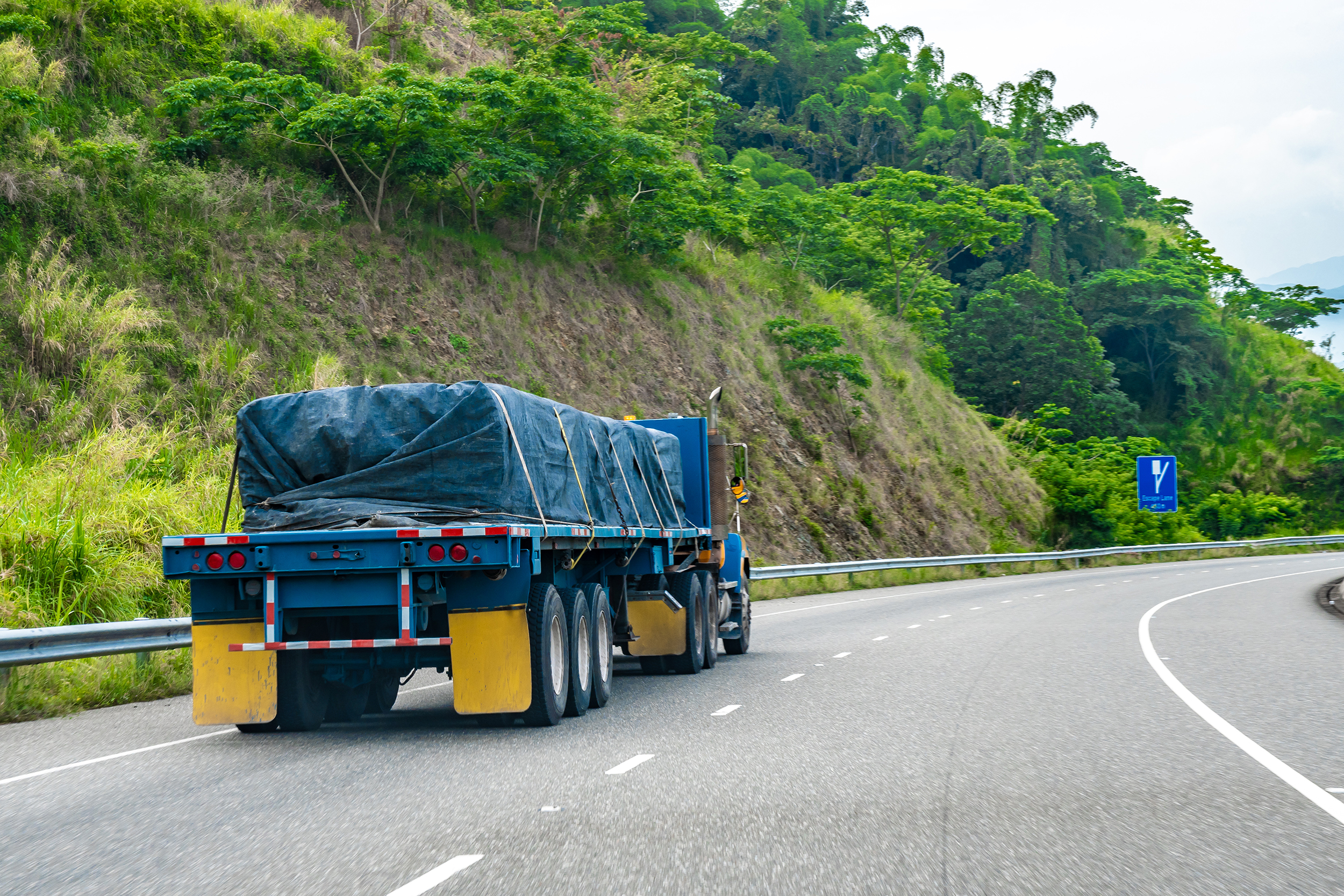Navigating the Tarpaulin Terrain: Staying Compliant with Regulations and Best Practices
In the vast realm of cargo transport, truck tarpaulins play a pivotal role in safeguarding goods on the open road. They are the guardians that shield cargo from the elements, ensuring that every shipment arrives intact. However, just like a skilled archer needs to hit the bullseye consistently, the use of tarpaulins demands precision and adherence to regulations and best practices.
In this journey, we delve into the critical landscape of truck tarpaulin compliance. Picture this exploration as a map, guiding you through the intricate pathways of legal requirements and industry standards. As you navigate this terrain, you’ll uncover regulations that resemble signposts, ensuring your cargo protection methods are on the right track. So, buckle up as we venture into the world of tarpaulin compliance, where safety, efficiency, and adherence go hand in hand.
Understanding Industry Regulations: Your North Star
Think of industry regulations as the guiding stars that illuminate your path in the tarpaulin terrain. Just as sailors once relied on stars for navigation, truckers rely on regulations to ensure they’re on the right course.
Navigating through these legal frameworks is like deciphering a map with different landmarks. Various aspects of tarpaulin usage, from materials to installation methods, fall under regulations set by authorities. Regional differences may also come into play, with specific guidelines tailored to different locations. Understanding these regulations is essential for maintaining compliance, safeguarding cargo, and avoiding potential penalties.
Types of Tarpaulins: Suitability and Regulations
Choosing the right tarpaulin material is akin to selecting the right tool for a specific task. Different materials possess distinct qualities, and these qualities must align with both cargo protection needs and regulatory requirements.
Imagine if a knight chose the wrong sword for battle – the consequences could be dire. Similarly, using tarpaulin materials that don’t meet regulations can lead to legal troubles and compromised cargo protection. Each material type, whether vinyl, mesh, or PVC, may have specific regulations that govern its usage. It’s crucial to ensure that your chosen material not only suits your cargo but also complies with relevant guidelines.
Proper Installation: The Foundation of Compliance
Just as a castle needs a solid foundation, proper tarpaulin installation serves as the bedrock of compliance. Imagine a knight wearing a suit of armor that’s ill-fitting – mobility would be hindered, and protection compromised. Similarly, incorrectly installed tarpaulins can jeopardize cargo and safety.
Proper installation involves secure fastening, precise tensioning, and ensuring that the tarpaulin covers the entire load effectively. Regulations often stipulate the correct installation methods to ensure optimal protection. Consider these guidelines as the blueprint for tarpaulin installation, safeguarding both cargo and regulatory adherence.
Load Securement: A Balancing Act
Think of load securement as the scales of justice – a delicate balance that ensures cargo is neither under-secured nor over-secured. Just as a knight must balance their armor’s weight for optimal mobility, cargo must be secured in a way that maintains equilibrium during transport.
Regulations governing load securement dictate factors such as load distribution, containment methods, and the role of tarpaulins in this process. Tarpaulins are more than mere covers; they play an integral role in preventing load shifts and maintaining load stability. Adhering to these regulations is like finding the perfect balance between protection and mobility, ensuring both cargo safety and regulatory compliance.
Inspection and Maintenance: Continuous Compliance
Regular inspection and maintenance of tarpaulins are akin to routine knightly armor checks – a practice that ensures constant readiness for challenges. Imagine if a knight’s armor was left unattended; its effectiveness would diminish over time. Similarly, neglecting tarpaulin maintenance can compromise both protection and compliance.
Routine inspections involve checking for signs of wear, tear, and damage. Any issues should be addressed promptly to prevent them from escalating into larger problems. Regulations often outline inspection intervals and criteria to ensure tarpaulins remain in compliance. Treat tarpaulin maintenance as a pledge to cargo safety and regulatory adherence, ensuring that protection is always at its peak.
Safety Measures: Beyond Regulations
Regulations provide a foundation for compliance, but safety measures go beyond the minimum requirements. Imagine a knight equipping themselves not only with armor but also with additional safety gear. Similarly, enhancing tarpaulin compliance with safety measures contributes to a higher level of protection.
Incorporating reflective materials, warning signs, and additional lighting are examples of safety measures that can supplement regulatory adherence. These measures enhance visibility and communication, making the truck and its cargo more noticeable on the road. Think of safety measures as the extra precautions that go beyond regulations, turning tarpaulins into beacons of safety.
Training and Education: Empowering Compliance
Education and training are like the mastery of knightly skills – they empower individuals to wield their tools effectively. Imagine a knight who isn’t trained to handle their weapons; their armor would offer limited protection. Similarly, proper training ensures that truckers and personnel understand tarpaulin compliance nuances.
Training programs educate drivers and personnel about correct tarpaulin usage, installation methods, and the importance of compliance. Knowledgeable individuals can identify issues, make necessary adjustments, and ensure that tarpaulins are used to their full potential. Consider training as the sharpening of skills, enabling the effective utilization of tarpaulin features for enhanced cargo protection and regulatory adherence.
Environmental Considerations: Sustainability and Responsibility
Just as knights held chivalry in high regard, modern practices demand a commitment to sustainability. Think of tarpaulin material choices as reflections of this commitment. Just as knights would opt for eco-friendly armor if given the choice, businesses can choose tarpaulin materials that align with sustainability goals.
Certain materials, such as recyclable options, not only meet compliance requirements but also contribute to reducing the industry’s environmental impact. By choosing materials that align with sustainability principles, businesses demonstrate a responsible approach to cargo protection and environmental stewardship.
Potential Consequences of Non-Compliance
Non-compliance is like navigating without a map – the path ahead is uncertain, and consequences can be severe. Imagine a knight entering battle without armor – the risks far outweigh the benefits. Similarly, disregarding tarpaulin regulations can lead to a range of negative outcomes.
Penalties, fines, legal issues, and compromised cargo protection are potential consequences of non-compliance. Real-world examples of these repercussions serve as cautionary tales, highlighting the importance of adhering to regulations. Just as knights faced consequences for disregarding their code of conduct, businesses must be aware of the risks associated with neglecting tarpaulin compliance.
Best Practices for Tarpaulin Compliance
Now that we’ve navigated the landscape of regulations and best practices, let’s consolidate our findings into a set of actionable best practices:
1. Educate Personnel: Provide comprehensive training to drivers and personnel about tarpaulin installation, inspection, and compliance nuances.
2. Select Appropriate Materials: Choose tarpaulin materials that meet both cargo protection needs and regulatory requirements.
3. Follow Installation Guidelines: Adhere to proper tarpaulin installation methods outlined in regulations to ensure optimal protection.
4. Regular Inspection and Maintenance: Implement routine checks for wear, tear, and damage, addressing issues promptly.
5. Balance Load Securement: Ensure cargo is secured effectively, adhering to regulations concerning load distribution and containment.
6. Incorporate Safety Measures: Supplement compliance with additional safety measures such as reflective materials and warning signs.
7. Consider Sustainability: Choose tarpaulin materials that align with sustainability goals for a responsible approach to protection.
8. Stay Updated with Regulations: Keep abreast of evolving regulations and regional guidelines to maintain compliance.
9. Understand Consequences: Familiarize yourself with potential penalties and risks associated with non-compliance.
10. Create a Comprehensive Strategy: Develop a comprehensive compliance strategy that integrates regulations, safety measures, and best practices.
Conclusion: Navigating the Path of Compliance
As we conclude our journey through the tarpaulin terrain, remember that compliance isn’t just a legal requirement – it’s a commitment to safety, efficiency, and responsibility. Just as knights upheld their codes of conduct, truckers and businesses must uphold the regulations and best practices that ensure cargo protection.
Think of tarpaulin compliance as the armor that safeguards both cargo and reputation. By understanding regulations, implementing best practices, and fostering a culture of adherence, businesses can navigate this terrain with confidence, knowing that their cargo is not only protected but also in accordance with industry standards.





